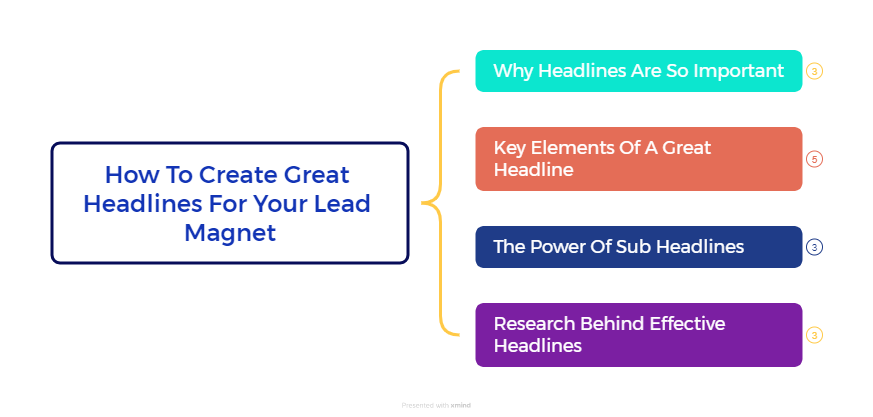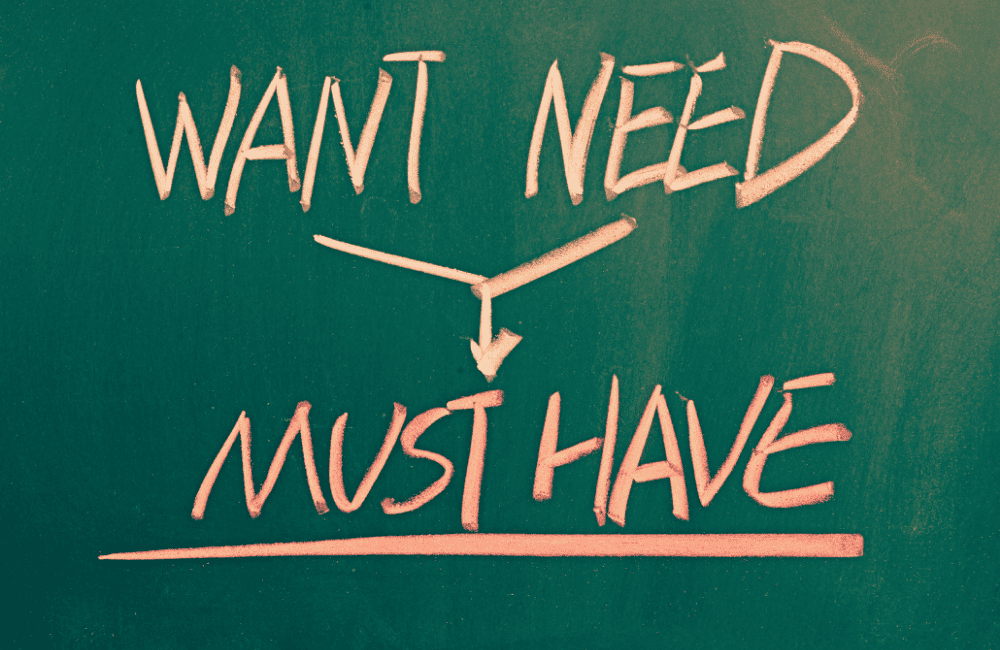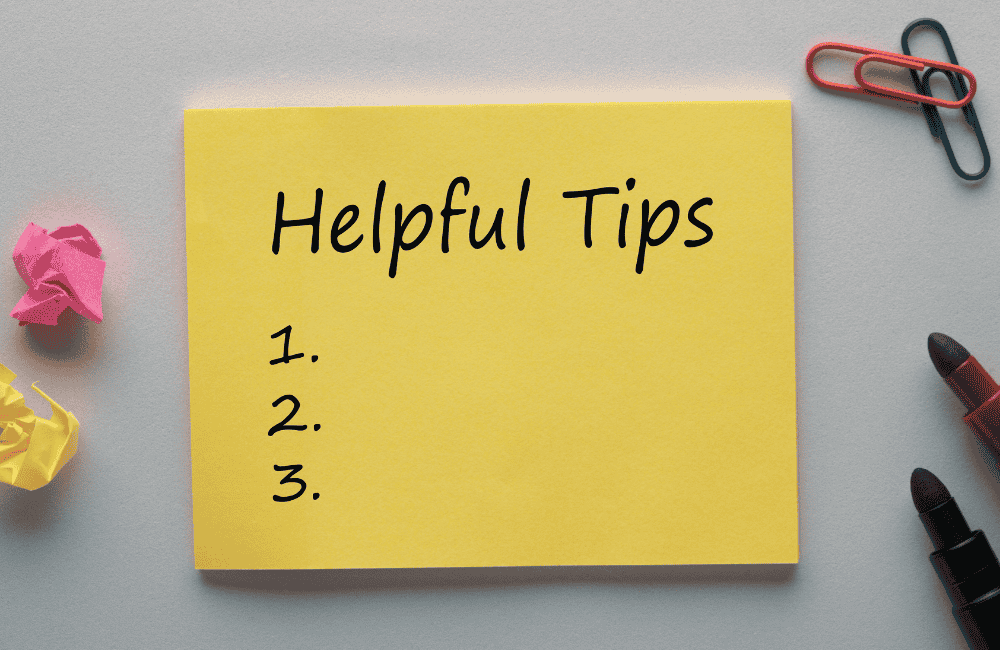Crafting Irresistible Headlines and Subheadlines
Skyrocket Your Lead Magnet's Success 💵💰
A well-crafted headline can mean the difference between capturing a lead and losing a potential customer forever.
Headlines are your first opportunity to grab attention, and they play a crucial role in determining whether someone decides to engage with your content.

It's said that 80% of people will read your headline, but only 20% will read the rest of your content (Source: Copyblogger).
This highlights the immense importance of crafting headlines and subheadlines that draw readers in and make them eager to learn more.
In this guide, we’ll explore what makes a headline effective, why it's important, and how to structure both headlines and subheadlines for maximum engagement.

Why Headlines Are So Important
A headline is your first and most critical opportunity to engage potential readers. David Ogilvy, often called the “Father of Advertising,” once said, “On the average, five times as many people read the headline as read the body copy.”
This means if your headline doesn't capture attention immediately, the rest of your content might as well be invisible.
Headlines are so important because they do the following:
Grab Attention: In a crowded online world, a great headline is often the only thing standing between your audience noticing your content or scrolling past it.
Set Expectations: A clear headline tells the reader what they will gain from engaging with the content. It sets the tone and expectation.
Entice Readers to Take Action: The headline is what makes someone click, sign up, or download your lead magnet.
A Conductor study found that 36% of people prefer headlines that clearly convey the benefit of reading the article. This insight makes it evident that your headline must be direct, benefit-oriented, and engaging.
The Key Elements of a Great Headline

To write an effective headline, it’s essential to include certain elements that consistently drive engagement:
Clarity: Readers should immediately understand what value they’re getting.
Benefit-Driven: Tell the audience exactly what they will gain.
Emotional Hook: Appeal to a specific emotion to draw the reader in.
Urgency: Create a sense of timeliness that makes readers feel they need to act now.
Relevance: Ensure the headline speaks directly to the target audience.
Consider this headline:
“10 Proven Strategies to Double Your Email List in 30 Days”
Clarity: The headline is clear about what the content is about.
Benefit-Driven: The reader knows they’ll learn how to grow their email list.
Urgency: The phrase “30 days” creates a time frame that gives a sense of achievable urgency.
The Power of Subheadlines
Subheadlines are the supporting cast that helps further engage the reader. Once the headline has drawn them in, the subheadline offers additional information to compel them to continue reading or to take action.
A good subheadline should:
Clarify and Expand on the Headline: It adds more detail to the promise made in the headline.
Provide Specifics: It can offer specifics about what’s included, such as the number of tips, strategies, or benefits.
Guide the Reader to Take Action: The subheadline should encourage the reader to keep reading or engage further.
For instance, let’s expand on our previous headline example:
Headline: “10 Proven Strategies to Double Your Email List in 30 Days”
Subheadline: “Learn the exact tactics top marketers use to grow their email list quickly—no expensive ads required!”
Here, the subheadline gives more context and details to make the content more enticing. It emphasizes that the reader will get value without incurring additional costs, which makes it even more appealing.
Proven Headline Formulas That Work

The beauty of headline writing is that you don’t need to reinvent the wheel. Many successful headline structures can be reused and adapted to your niche.
Here are some tried-and-tested headline formulas that have been proven to work:
The How-To Headline
Example: “How to Write Headlines That Get 3x More Clicks”
Why It Works: People love practical advice, and the “How-To” format promises actionable steps.
The List Headline
Example: “7 Secrets to Writing Headlines That Convert”
Why It Works: List headlines provide a clear expectation and indicate that the content is easy to digest.
The Question Headline
Example: “Are You Making These Common Headline Mistakes?”
Why It Works: Questions engage the reader directly and make them curious about the answer.
The “Reason Why” Headline
Example: “5 Reasons Why Your Headlines Aren’t Getting Clicked”
Why It Works: It directly addresses a problem the reader may be facing and provides specific reasons to resolve it.
Using Emotional Triggers in Headlines
Emotion is a powerful tool in headline writing. Research from CoSchedule shows that headlines with emotional words can boost engagement by up to 75%. But what types of emotions work best?
Fear of Missing Out (FOMO)
Example: “Don’t Miss Out on These 5 Headline Writing Tips That Can Boost Your Clicks”
Curiosity
Example: “What Nobody Tells You About Writing Effective Headlines”
Excitement
Example: “The Ultimate Guide to Crafting Headlines That Make People Click”
Urgency
Example: “Last Chance: Learn How to Write Perfect Headlines Before Your Competitors Do!”
By tapping into your audience’s emotions, you can increase the likelihood that they’ll engage with your content. A headline that speaks to a deep desire or addresses a fear will always outperform a generic one.
Examples of Effective Lead Magnet Headlines and Subheadlines

Let’s look at some effective examples of lead magnet headlines and subheadlines and break down why they work:
Headline: “Free Ebook: Master the Art of Writing Headlines That Convert”
Subheadline: “Download our step-by-step guide and learn the exact techniques top copywriters use to create headlines that drive conversions.”
Why It Works: The headline is clear and promises a “free ebook”, which is a specific value. The subheadline then adds credibility by mentioning “techniques top copywriters use.”
Headline: “7 Email Subject Lines That Got a 50% Open Rate (And How to Use Them)”
Subheadline: “Steal these high-performing subject lines to boost your own email marketing campaigns today.”
Why It Works: This headline provides a specific number and result (“50% open rate”), which adds credibility. The subheadline encourages action by offering to let readers “steal” these strategies.
Statistics and Research Behind Effective Headlines
Numbers don’t lie, and statistics can provide insight into why certain headlines perform better than others. Here are some key data points to keep in mind:
Numbers Increase Engagement: Headlines with numbers tend to perform better. A study by BuzzSumo analyzed 100 million headlines and found that headlines with numbers generate 73% more social shares and engagement.
The Ideal Length for a Headline: According to CoSchedule’s Headline Analyzer, headlines with 6-8 words tend to perform best in terms of engagement. This is because they are long enough to convey value but short enough to be easily read and remembered.
Power Words Boost Click-Through Rates: Including power words like “proven,” “ultimate,” and “free” can increase click-through rates significantly. Power words create a sense of excitement and authority, making the headline more compelling.
Tips for Crafting the Perfect Headline and Subheadline

Use a Headline Analyzer Tool: Tools like CoSchedule Headline Analyzer or Sharethrough Headline Analyzer can help you assess the quality of your headline by scoring it based on structure, grammar, and emotional appeal.
Test Multiple Variations: A/B testing is crucial. Create several versions of your headline and test them to see which one performs best. Platforms like Facebook Ads or Google Ads allow you to test different headlines and see what drives more clicks.
Include Keywords for SEO: Remember to include relevant keywords in your headline for SEO purposes. This will help your lead magnet show up in search engine results, attracting organic traffic.
Make It Specific: Vague headlines are less likely to generate clicks. Be as specific as possible about the benefit the reader will gain. Instead of “Learn to Write Better Headlines,” say “Learn 5 Headline Writing Techniques That Boost Engagement by 200%.”
Common Mistakes to Avoid
Being Too Vague: A headline like “Improve Your Writing Skills” doesn’t tell the reader enough. What skills? By how much?
Overpromising: Avoid making promises that your content can’t deliver. Headlines that overpromise can lead to disappointment, which hurts your brand credibility.
Lack of Focus: A good headline is laser-focused. Avoid trying to cover too many things in one headline. Stick to one key benefit or promise.
Putting It All Together: Crafting Your Lead Magnet Headline

Now that you understand the components that make a headline and subheadline effective, let’s walk through the process of creating one step-by-step:
Identify the Core Benefit: What is the key value your lead magnet provides?
Example: “Learn to Write Headlines That Get Clicks.”
Incorporate a Specific Outcome: Add specificity.
Example: “Learn to Write Headlines That Get 3x More Clicks.”
Add Urgency or Emotion: Create a sense of urgency.
Example: “Discover How to Write Headlines That Get 3x More Clicks—Even If You’re a Beginner!”
Final Headline: “Discover How to Write Headlines That Get 3x More Clicks—Even If You’re a Beginner!”
Subheadline: “Download our free guide to learn the proven techniques top marketers use to craft headlines that engage and convert.”
Conclusion
Crafting the perfect headline and subheadline for your lead magnet is a critical skill that can make or break your marketing campaign. A powerful headline grabs attention, sets expectations, and draws readers in, while an effective subheadline offers additional details to encourage further action.
Remember, the key to writing a great headline is understanding your audience’s needs and desires. By being specific, using emotional triggers, and incorporating urgency, you can create headlines and subheadlines that captivate your audience and drive engagement.
Use the techniques, examples, and tips provided in this guide to start crafting headlines that convert. And don’t forget—practice makes perfect.
The more you experiment and test, the better your headlines will become.
If you want to create great Lead Magnets quickly, check out the demo at LeadCreator.ai now!
It's A Great Tool That I Use Every Day!